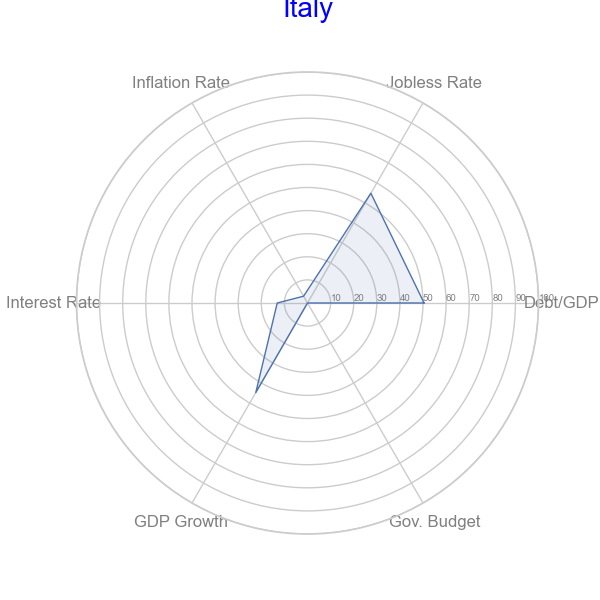Introduction:
In the realm of economic performance among 23 major economies, spider web charts offer a visual representation of percentile rankings across key macroeconomic measures. Traditionally, larger areas on such charts may denote higher values which could be perceived as positive. However, when it comes to economic health, smaller is often better. Lower inflation rates, unemployment figures, debt-to-GDP ratios, interest rates, and government spending relative to GDP are generally signs of a robust economy, with the exception of GDP growth, where higher numbers are favored. As we compare these charts, it’s notable that some nations like South Korea showcase a desirable compactness in their economic indicators.
South Korea’s Economic Efficiency:
 The compact spider web chart of South Korea stands out, illustrating its economic efficiency. The small area captured by its chart suggests commendable control over inflation, unemployment, and debt levels, highlighting a balanced and stable economic environment conducive to sustained growth.
The compact spider web chart of South Korea stands out, illustrating its economic efficiency. The small area captured by its chart suggests commendable control over inflation, unemployment, and debt levels, highlighting a balanced and stable economic environment conducive to sustained growth.
Contrasting Larger Spreads in Other Economies: In contrast, some countries exhibit larger areas within their spider charts. A closer inspection reveals that while a bigger spread can indicate higher GDP growth, it often comes with the trade-off of increased inflation, debt, and other economic challenges.
The Significance of Smaller Spans: Delve into why smaller spans in these charts are indicative of positive economic health. Lower inflation rates and unemployment suggest a stable cost of living and a strong job market, while a lower debt-to-GDP ratio points to sustainable government finances. Modest government budgets as a percentage of GDP reflect fiscal prudence, and low-interest rates are often a sign of controlled monetary policy conducive to borrowing and investment.
Contextualizing GDP Growth: While GDP growth is the one measure where larger figures are typically better, reflecting a vibrant and expanding economy, it must be interpreted within the context of these other factors to assess overall economic well-being.






















No comments:
Post a Comment